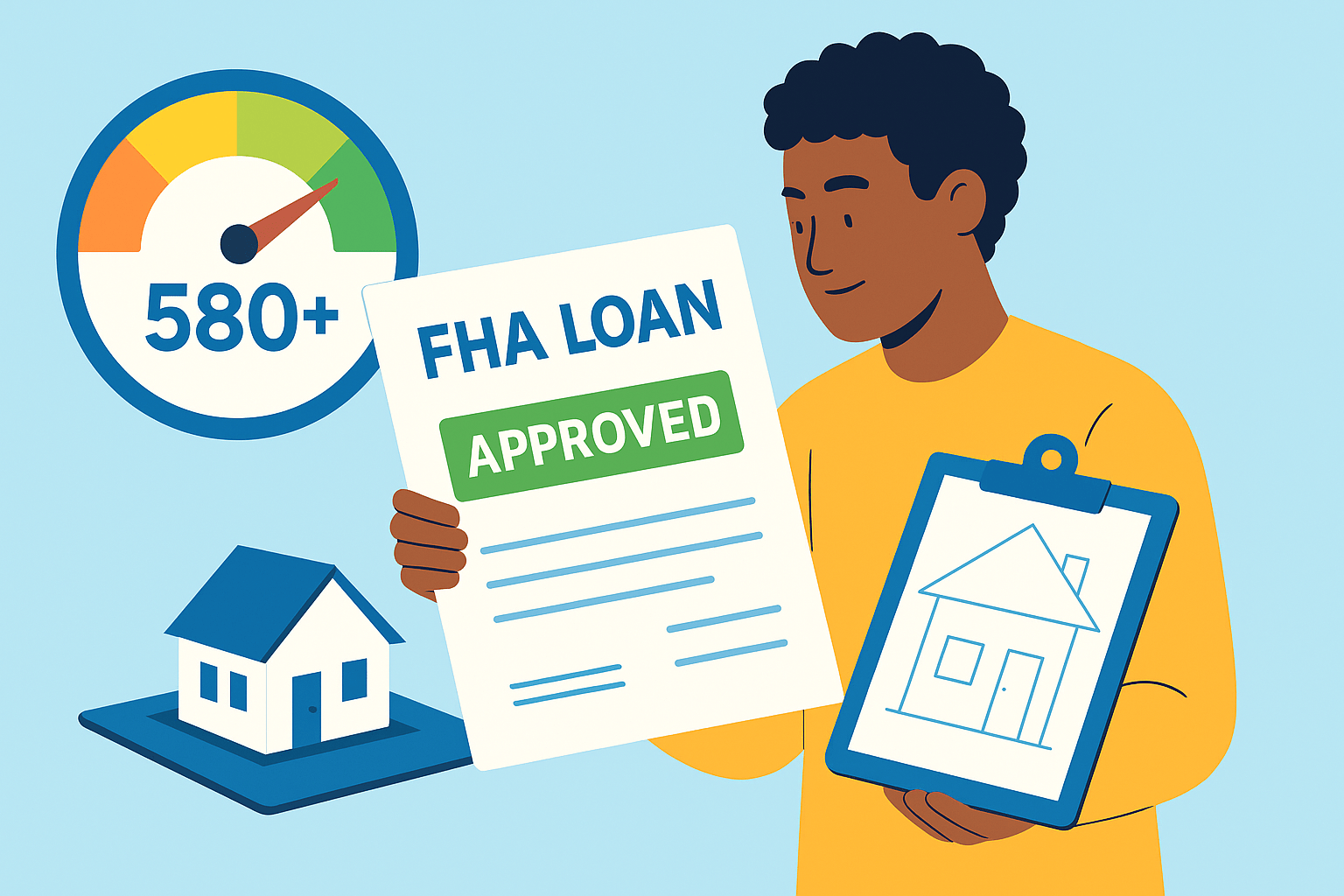Time-To-Own Program First-Time Homebuyer Assistance Programs
Time-To-Own Program: The Connecticut Roadmap From Renting to Owning
Dreaming of trading your rent check for a mortgage payment you can actually afford? Connecticut’s Time-To-Own Program may be the key that finally unlocks your front door.
Why the Time-To-Own Program Matters Right Now
In the first quarter of 2024, median home prices in Connecticut jumped roughly 7 percent year-over-year, according to regional MLS data. Rents rose just as quickly, leaving many first-time buyers feeling squeezed from both sides. The Time-To-Own Program offers a way out of that squeeze by converting part of your monthly rent into equity—an approach sometimes called a rent-to-own pathway. Unlike private rent-to-own contracts that can feel as fragile as cardboard in a rainstorm, this state-backed option provides structure, oversight, and predictable costs.
How Does the Time-To-Own Program Work?
The Connecticut Housing Finance Authority (CHFA) administers the Time-To-Own Program. In simple terms, participants:
- Lease a qualifying property for a preset period, typically 24 – 36 months.
- Lock in an eventual purchase price at today’s values, shielding you from runaway appreciation.
- Earn credits—a slice of each rent payment accrues toward your future down payment.
- Transition to a CHFA mortgage when the lease term ends, often with below-market fixed rates.
The program blends the flexibility of renting with the discipline of forced savings. Every check you write moves the dial from “tenant” toward “titleholder.”
People Also Ask
Who is eligible for the Time-To-Own Program in Connecticut?
Eligibility centers on three pillars:
- First-time buyer status. You must not have owned a principal residence in the past three years, though military veterans get an exception.
- Income limits. CHFA caps household income at roughly 115 percent of area median income (AMI). Numbers vary by county; for example, in Hartford County the maximum for a two-person household hovers around $102,000.
- Home-price ceilings. The target property must fall under CHFA’s purchase-price limits—typically $548,000 or less for single-family homes in most counties.
Credit scores as low as 640 may qualify, yet applicants in the 680-plus range receive faster approval and lower interest. Meeting a modest reserve requirement (often two months of proposed housing payments) also helps.
What are the benefits of the CT Time-To-Own Program versus a traditional mortgage?
Imagine two highways toward homeownership. On the standard mortgage highway, you need a down payment, spotless credit, and nerves of steel to face volatile rates. The Time-To-Own Program offers an alternate road with gentler curves:
- Built-in down payment. Monthly rent credits accumulate automatically, so you’re not tempted to raid the savings jar.
- Below-market rates. CHFA rates historically run 0.25 – 0.50 percent lower than conventional loans, trimming thousands in interest.
- Education support. Mandatory home-buyer classes equip you with budgeting, maintenance, and closing-cost know-how—skills many borrowers wish they had learned earlier.
- No surprise price spikes. The acquisition price is locked, insulating buyers from future bidding wars.
How long is the rent-to-own period?
Most leases span two to three years, though CHFA allows extensions if market conditions change or repairs delay closing. A shorter term speeds up equity building; a longer term can help when you need extra time to polish credit or pay down debt.
The Journey of Maria & Jay: A Micro-Story
Maria, a lab technician, and Jay, a public-school math teacher, earned a combined $88,000—just under the New Haven County income cap. After three rejected conventional-loan offers, they shifted strategy. Upon entering the Time-To-Own Program, $350 of their $1,800 monthly rent accrued toward a down payment. At month 30, they had banked $10,500 in credits plus $3,200 in voluntary savings. That nest egg covered closing costs and slashed their CHFA-issued mortgage by 5 percent, shaving $112 from every monthly payment. Today, Maria and Jay mentor new applicants at their local housing nonprofit, proof the program’s gears spin smoothly when set in motion.
Step-by-Step Application Blueprint
- Take a Homebuyer Education Class. Choose an HUD-approved counselor; classes run 6–8 hours and cost roughly $100.
- Gather documents. You’ll need two years of W-2s, 60 days of bank statements, and a tri-merge credit report.
- Pre-qualify with a CHFA lender. There are 60+ approved lenders statewide; shop at least three for fees.
- Select a qualified property. The home must meet CHFA’s habitability standards and fall within price limits.
- Sign the Time-To-Own lease-purchase agreement. This legal document details rent credits, length, and purchase price.
- Monitor progress. Pull a free credit report every 12 months; reduce revolving debt below 30 percent utilization.
- Exercise your option. When the term ends, convert to a CHFA mortgage and close—cracking open the champagne you chilled three years ago.
Financial Nuts & Bolts
| Feature | Time-To-Own | Typical FHA Loan |
|---|---|---|
| Minimum Down Payment | As low as $0 (via rent credits) | 3.5% |
| Interest Rate (Q2 2024 Avg.) | 5.65% | 6.10% |
| Up-front Mortgage Insurance | None | 1.75% |
| Education Requirement | Yes | No |
Those small deltas add up. On a $350,000 home, a half-percent rate reduction saves roughly $36,000 over 30 years—a tidy college fund or kitchen remodel.
Hidden Gems: Lesser-Known Advantages
- Energy-efficiency credits. Homes meeting ENERGY STAR standards may qualify for extra interest-rate discounts.
- Student-loan flexibility. CHFA uses actual payment amounts, not the 1 percent rule many lenders apply—crucial for millennials carrying graduate debt.
- Rehabilitation financing. Pair the program with CHFA’s Home Improvement option to tackle a worn roof or dated bathroom in one closing.
Other Questions People Ask—Quick FAQ
Is the Time-To-Own Program only for single-family homes?
No. Condos, two-to-four-unit properties, and certain manufactured homes qualify if they meet CHFA standards.
Can I withdraw my rent credits in cash?
Credits apply strictly to the down payment and closing costs; they cannot be cashed out.
What if I decide not to buy?
You may forfeit some or all credits depending on contract terms, so read the fine print—or better, consult housing counsel.
Are there geographic restrictions?
Any Connecticut property is eligible, but targeted areas (i.e., census tracts needing revitalization) may offer enhanced benefits.
Can I layer other assistance programs?
Yes. Down-payment grants such as HDF SmartMove or local employer initiatives can stack with Time-To-Own, lowering costs further.
Pro Tips to Strengthen Your Application
Small tweaks often tilt the scale:
- Keep your credit utilization under 30 percent for six months before applying.
- Avoid changing jobs; if you must, stay within the same industry to preserve a stable work history.
- Set up an automatic transfer for additional down-payment savings—even $100 monthly signals financial discipline.
- Ask your landlord to report on-time rent payments via Experian Boost to potentially raise your FICO score.
Potential Drawbacks to Consider
No program is perfect. Participants should weigh:
- Limited inventory. Not every seller is willing to sign a lease-purchase contract, shrinking your house-hunting map.
- Upkeep responsibilities. Many agreements transfer minor maintenance to tenants long before they own the deed.
- Early exit penalties. Breaking the lease could nullify accrued credits—read every clause or risk a nasty surprise.
Connecticut Market Outlook: Why Acting Now May Pay Off
The Federal Reserve projects two modest rate cuts by mid-2025, yet demand is likely to stay hot given the state’s tight housing stock. A 2023 UConn study showed Connecticut building permits lagging 54 percent below their 2005 peak. Less supply plus pent-up millennial demand equals rising prices. Locking a purchase price today through the Time-To-Own Program could preserve thousands in future equity.
Your Next Move
Homeownership isn’t an abstract milestone; it’s Saturday morning pancakes in a kitchen you painted teal on a whim. If you’re tired of rent receipts that vanish into thin air, explore the Time-To-Own Program today. Connect with a CHFA-approved lender, schedule a home-buyer class, and start redirecting your rent toward your forever address.
Ready to see if you qualify? Reach out to our team of Connecticut real-estate pros for a free 15-minute strategy call. We’ll help you find participating properties, compare lenders, and turn that key in the lock—sooner than you think.
Suggested URL slug: /connecticut-time-to-own-program-guide
Explore More Blog Posts
Checkout more similar posts those will help you to choose better property.












 Profile
Profile Password
Password Saved Properties
Saved Properties Sign Out
Sign Out
 +0.01
+0.01
 -0.15
-0.15

